- Joined
- Dec 13, 2015
- Messages
- 142
- Reaction score
- 483
This was the fourth site we visited on our Welsh adventure. To go back to the beginning, click here.
History from the time chamber
During 1939 the Air Ministry was looking to build a large bomb store capable of storing a large amount of ordnance. In Llanberis the Glynrhonwy Isaf slate quarry was sitting disused, upon inspection it was deemed suitable for the Air Ministries needs of storing 18,000lbs of bombs. Following the success of the design employed at Harpur Hill, the Air Ministry decided to employ the same design. The layout of the quarry was a number of deep excavations, linked by tunnels. Due to the depth of the tunnel, the store was built over two levels, and 40ft of broken slate was used as protection. Only the eastern pit was converted to a bomb store, with the western pit remaining undeveloped.
Bombs were transported into the site on narrow gauge railway, and lifts provided access to the upper levels. During the construction of the store, the treasury pressured the designers to reduce costs on the design and speed the construction, this was to lead to disastrous consequences only 6 months after the store was opened. In January, 1942, two thirds of the entire structure collapsed under the weight of the roof. The collapse completely engulfed a train loaded with ordnance, and over 14,000 tonnes of bombs. The comprised approximately 14% of the entire bomb stock of the RAF.
The majority of the bombs were recovered from the site, and the site cleared of collapse debris. No ammo was stored at Llanberis again, the underground sections were abandoned and the open pit used for storage of incendiaries. The depot remained in use throughout the war, and for a number of years after, eventually closing in 1956. However, a small detachment of bomb disposal experts remained to patiently clear the dumped weapons – after the war, a large quantity of weapons had been dumped into the pits. 15 years after the site had closed, the decision was taken to remove all of the unexploded ordnance that was still contained within the site. Upon investigation by navy divers, it was found that a large amount of explosive was found on the bed of one of the pits. 20,000,000 gallons of water was pumped from the lake, and the bed was finally revealed its secrets. Over 350 tonnes of explosives were found, along with 1,400 tonnes of non-explosive ordnance. The site was cleared and then vacated
Explore
This was only supposed to be a half an hour mooch to stretch our legs before moving on the the big one, however as always, it took much longer than expected. Parking spot decided upon and hole located, we walked around the back and before long, found ourselves on top of the stores. I don’t normally make reference to access details in my posts but in the interests of safety I will here – GO ROUND THE FRONT!! We ended up skirting the edge of the stores which I would estimate at being 10-15m from the excavated floor of the stores. We startled a couple who seemed to be checking the place out, who helpfully pointed out the best way down, this place looks a hell of a lot bigger than it did on google maps!!
Here are some pictures (I managed to leave my torch in the car, so there aren’t as many as I would have liked I’m afraid.
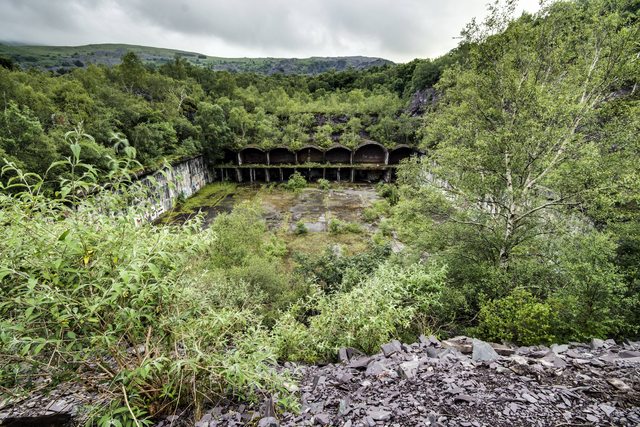
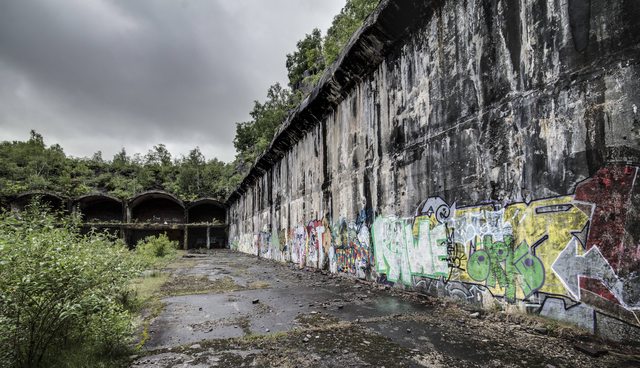
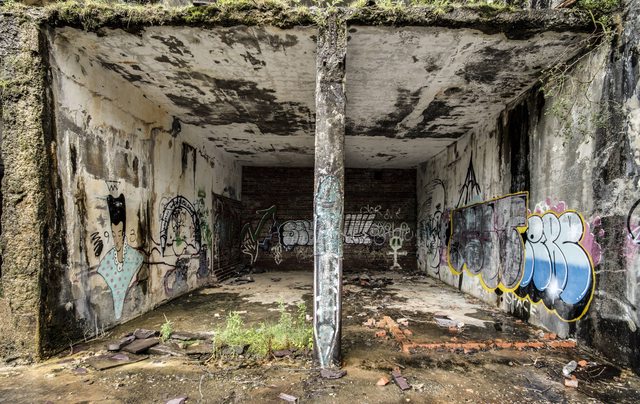
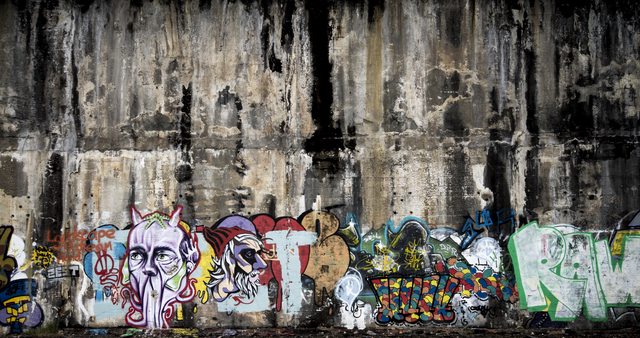
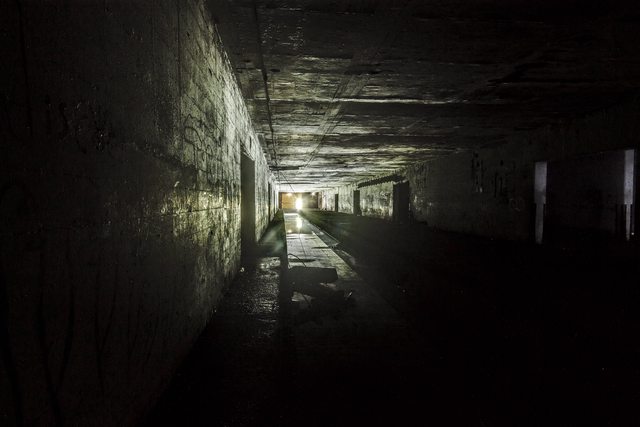
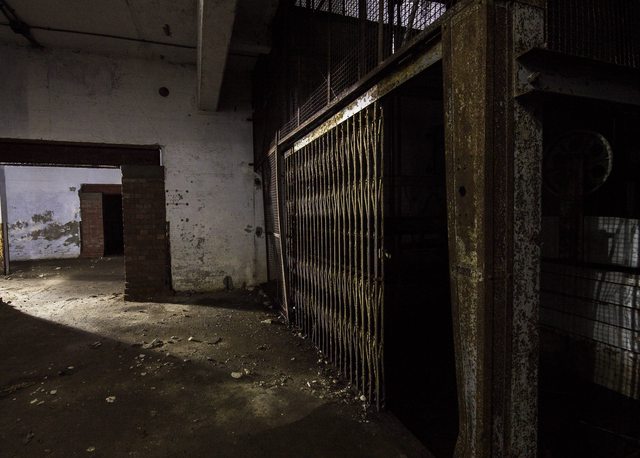
From here, it was off to Tesco to grab a tarp for Pringle, then somewhere to camp for the night. We struggled on both counts, ending up with a rather fetching shower curtain and a campsite at the top of an all together too steep hill. I had a tantrum!
Feeling fresh(ish) the next morning, we headed for the main event, Denbeigh Asylum
History from the time chamber
During 1939 the Air Ministry was looking to build a large bomb store capable of storing a large amount of ordnance. In Llanberis the Glynrhonwy Isaf slate quarry was sitting disused, upon inspection it was deemed suitable for the Air Ministries needs of storing 18,000lbs of bombs. Following the success of the design employed at Harpur Hill, the Air Ministry decided to employ the same design. The layout of the quarry was a number of deep excavations, linked by tunnels. Due to the depth of the tunnel, the store was built over two levels, and 40ft of broken slate was used as protection. Only the eastern pit was converted to a bomb store, with the western pit remaining undeveloped.
Bombs were transported into the site on narrow gauge railway, and lifts provided access to the upper levels. During the construction of the store, the treasury pressured the designers to reduce costs on the design and speed the construction, this was to lead to disastrous consequences only 6 months after the store was opened. In January, 1942, two thirds of the entire structure collapsed under the weight of the roof. The collapse completely engulfed a train loaded with ordnance, and over 14,000 tonnes of bombs. The comprised approximately 14% of the entire bomb stock of the RAF.
The majority of the bombs were recovered from the site, and the site cleared of collapse debris. No ammo was stored at Llanberis again, the underground sections were abandoned and the open pit used for storage of incendiaries. The depot remained in use throughout the war, and for a number of years after, eventually closing in 1956. However, a small detachment of bomb disposal experts remained to patiently clear the dumped weapons – after the war, a large quantity of weapons had been dumped into the pits. 15 years after the site had closed, the decision was taken to remove all of the unexploded ordnance that was still contained within the site. Upon investigation by navy divers, it was found that a large amount of explosive was found on the bed of one of the pits. 20,000,000 gallons of water was pumped from the lake, and the bed was finally revealed its secrets. Over 350 tonnes of explosives were found, along with 1,400 tonnes of non-explosive ordnance. The site was cleared and then vacated
Explore
This was only supposed to be a half an hour mooch to stretch our legs before moving on the the big one, however as always, it took much longer than expected. Parking spot decided upon and hole located, we walked around the back and before long, found ourselves on top of the stores. I don’t normally make reference to access details in my posts but in the interests of safety I will here – GO ROUND THE FRONT!! We ended up skirting the edge of the stores which I would estimate at being 10-15m from the excavated floor of the stores. We startled a couple who seemed to be checking the place out, who helpfully pointed out the best way down, this place looks a hell of a lot bigger than it did on google maps!!
Here are some pictures (I managed to leave my torch in the car, so there aren’t as many as I would have liked I’m afraid.






From here, it was off to Tesco to grab a tarp for Pringle, then somewhere to camp for the night. We struggled on both counts, ending up with a rather fetching shower curtain and a campsite at the top of an all together too steep hill. I had a tantrum!
Feeling fresh(ish) the next morning, we headed for the main event, Denbeigh Asylum
Last edited:
































